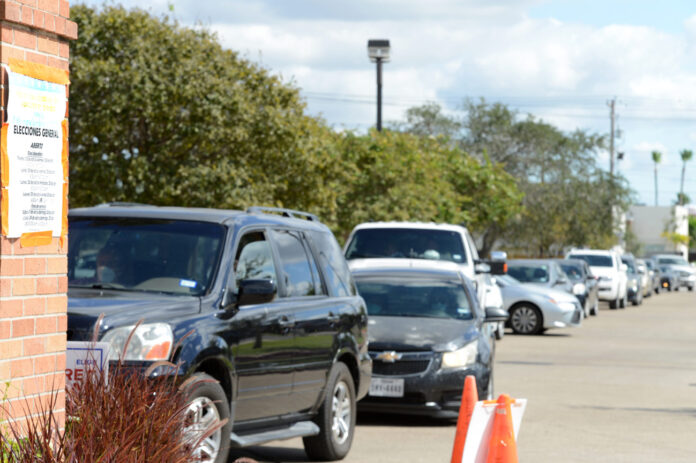Latinos in the Rio Grande Valley and some other parts of the state voted for the Republican presidential candidate at an unexpected rate this election compared to past elections, though pinning down the major reason why is tough without a comprehensive survey.
That’s according to Terence Garrett, professor in the Political Science Department of the University of Texas Rio Grande Valley, who nevertheless speculated on some likely potential factors. With the exception of Zapata County, South Texas counties — including Cameron — went for Joe Biden over Donald Trump, though by 8 or 9 percentage points less than Hillary Clinton or Barack Obama.
Based on the enthusiasm Obama and Clinton generated in blue South Texas, Democrats and the Biden campaign probably assumed they had the Rio Grande Valley sewn up this election, though a visit to the Valley by Biden running mate Kamala Harris just before Election Day seemed to indicate a late-breaking realization within the campaign that 2020 wasn’t going to be like the last two presidential elections, Garrett said.
“That’s not terribly good timing,” he said. “They were a day late and a dollar short.”
Biden therefore probably wasn’t as well known among Valley voters as Trump, who actually visited the Valley, Garrett said.
“They know who he is,” Garrett said. “He’s been down here. He’s an authoritarian and that appeals to some elements of the population, patriarchal society and that sort of thing. There’s an element of that.”
Cameron County Democratic Party Chairman Jared Hockema said the county is frequently an afterthought when it comes to state and national races, and faulted the Biden campaign for essentially ignoring voters here and even the Texas Democratic Party for not lending a hand during the election.
“We received zero resources from the state party,” Hockema said.
Garrett said Trump’s “law and order” message may have worked well for him among the Valley’s Latino community, which tends to be socially conservative although historically Democratic in party affiliation.
“You’ve got an increased federal presence down here, which I think is bearing fruit for the Republicans, particularly for Trump,” he said. “They tend to back him.”
Garrett noted that the National Border Patrol Council and the National Immigration Customers Enforcement Council (the CBP and ICE employee unions, respectively) endorsed Trump in 2016 and 2020.
“They’re the only unions in the federal government that endorsed a presidential candidate,” Garrett said. “They’re a big employer down here. Just in the Lower Rio Grande Valley sector I believe there are about 3,500, and then of course they have their families associated with them.”
He said it’s also possible that Trump’s nomination of pro-life judge Amy Coney Barrett to the Supreme Court scored points among some of the Valley’s conservative Democrats. Texas went to Trump by around six percentage points, though it probably would have been closer to 3 percent had the usual voting patterns held among Latinos, Garrett said.
Lacking of comprehensive exit-polling effort by a big polling firm, and with only a single election as a reference point, it’s hard to know whether 2020 was an aberration or the start of a pattern, he said. While Trump got more votes than anticipated in Texas Democratic strongholds along the border, including El Paso, such was not the case in the state’s biggest metropolitan areas, Garrett noted.
Likewise, Latino communities in Arizona and California turned out overwhelmingly for Biden, he said. Still, Garrett said 2020 should serve as a wake-up call to Democrats in terms of automatically being able to count on Latino support in an election.
“I think they found that out in a few places, especially in South Florida and South Texas,” he said. “That tends to be where it happened. … They’re not as monolithic as people maybe assume that they are as a voting bloc.”




